LINCOLN TOWN CAR 1998 Repair Manual
Manufacturer: LINCOLN, Model Year: 1998, Model line: TOWN CAR, Model: LINCOLN TOWN CAR 1998Pages: 188, PDF Size: 1.29 MB
Page 61 of 188

procedure. To program a new
SecuriLockykey yourself, you will
need two previously programmed
SecuriLockykeys (keys that
already operate your vehicle's
engine). If two previously
programmed SecuriLockykeys are
not available (one or both of your
original keys were lost or stolen),
you must bring your vehicle to
your dealership to have the spare
SecuriLockykey(s) programmed.
Procedure to program spare
SecuriLockYkeys to your
vehicle
New SecuriLockykeys must have
the correct mechanical key cut for
your vehicle.
Conventional (non-SecuriLocky)
keyscannotbe programmed to
your vehicle.
You will need to have two
previously programmed
SecuriLockykeys and the new
unprogrammed SecuriLockykey
readily accessible for timely
implementation of each step in the
procedure. Please read and
understand the entire procedure
before you begin.
1. Insert the first previously
programmed SecuriLockykey into
the ignition switch and turn the
ignition from OFF to RUN
(maintain ignition in RUN for at
least one second).
2. Turn ignition to OFF and
remove the first SecuriLockykey
from the ignition switch.
Controls and features
62
Page 62 of 188

3. Within five seconds of turning
the ignition to OFF, insert the
second previously programmed
SecuriLockykey into the ignition
switch and turn the ignition from
OFF to RUN (maintain ignition in
RUN for at least one second but no
more than 5 seconds).
4. Turn the ignition to OFF and
remove the second SecuriLocky
key from the ignition switch.
5. Within 10 seconds of turning the
ignition to OFF, insert the
unprogrammed SecuriLockykey
(new key) into the ignition switch
and turn the ignition from OFF to
RUN (maintain ignition switch in
RUN for at least one second). This
step will program your new
SecuriLockykey.
6. If it is desired to program
additional SecuriLockykey(s),
repeat this procedure from step 1.
If the programming procedure was
successful, the new SecuriLocky
key(s) will start the vehicle's
engine. The theft indicator (located
on the instrument panel) will light
for three seconds and then go out.
If the programming procedure was
not successful, the new
SecuriLockykey(s) will not
operate the vehicle's engine. The
theft indicator will flash on and off.
Wait at least one minute and then
repeat the procedure from step 1.
If failure repeats, bring your
vehicle to your dealership to have
the spare SecuriLockykey(s)
programmed.
Controls and features
63
Page 63 of 188
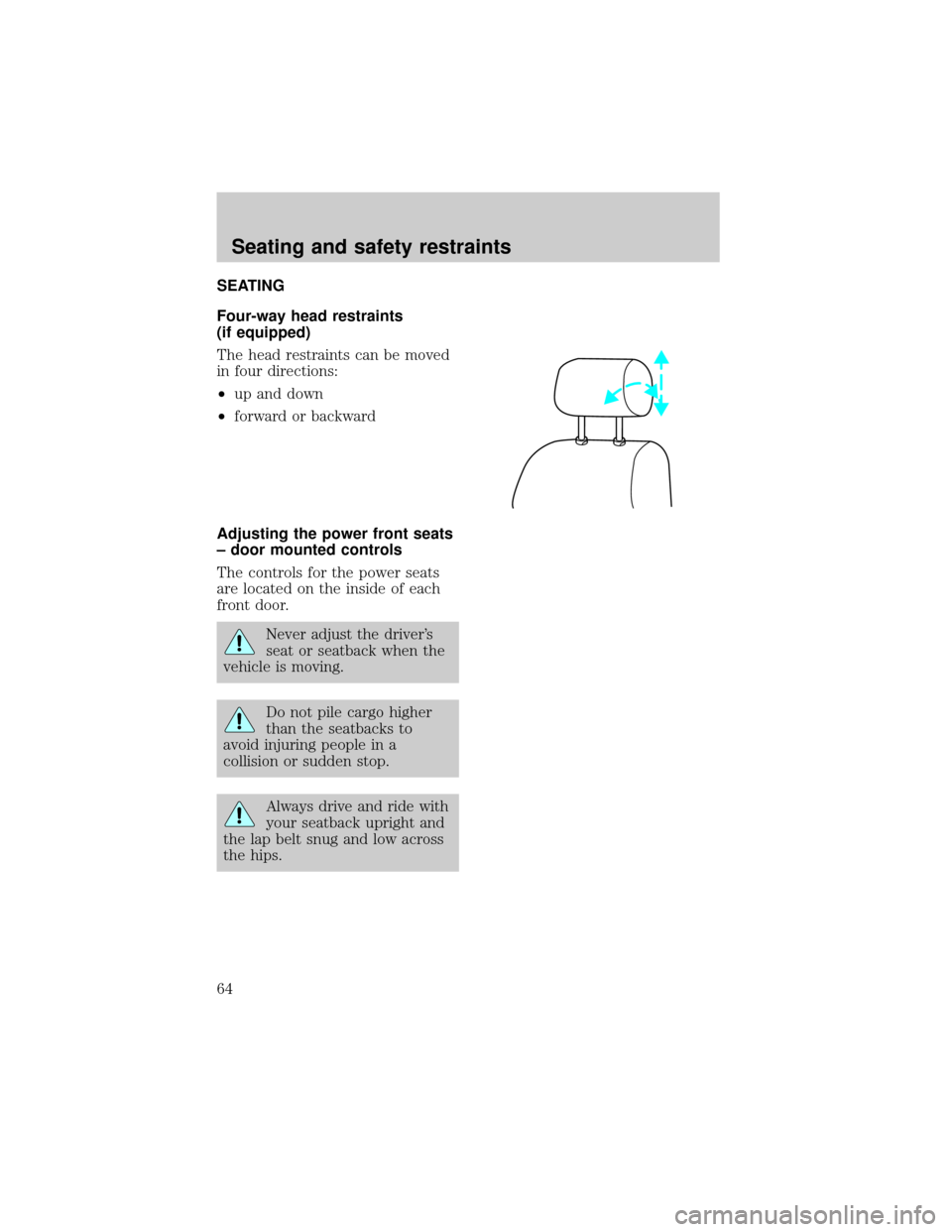
SEATING
Four-way head restraints
(if equipped)
The head restraints can be moved
in four directions:
²up and down
²forward or backward
Adjusting the power front seats
± door mounted controls
The controls for the power seats
are located on the inside of each
front door.
Never adjust the driver's
seat or seatback when the
vehicle is moving.
Do not pile cargo higher
than the seatbacks to
avoid injuring people in a
collision or sudden stop.
Always drive and ride with
your seatback upright and
the lap belt snug and low across
the hips.
Seating and safety restraints
64
Page 64 of 188
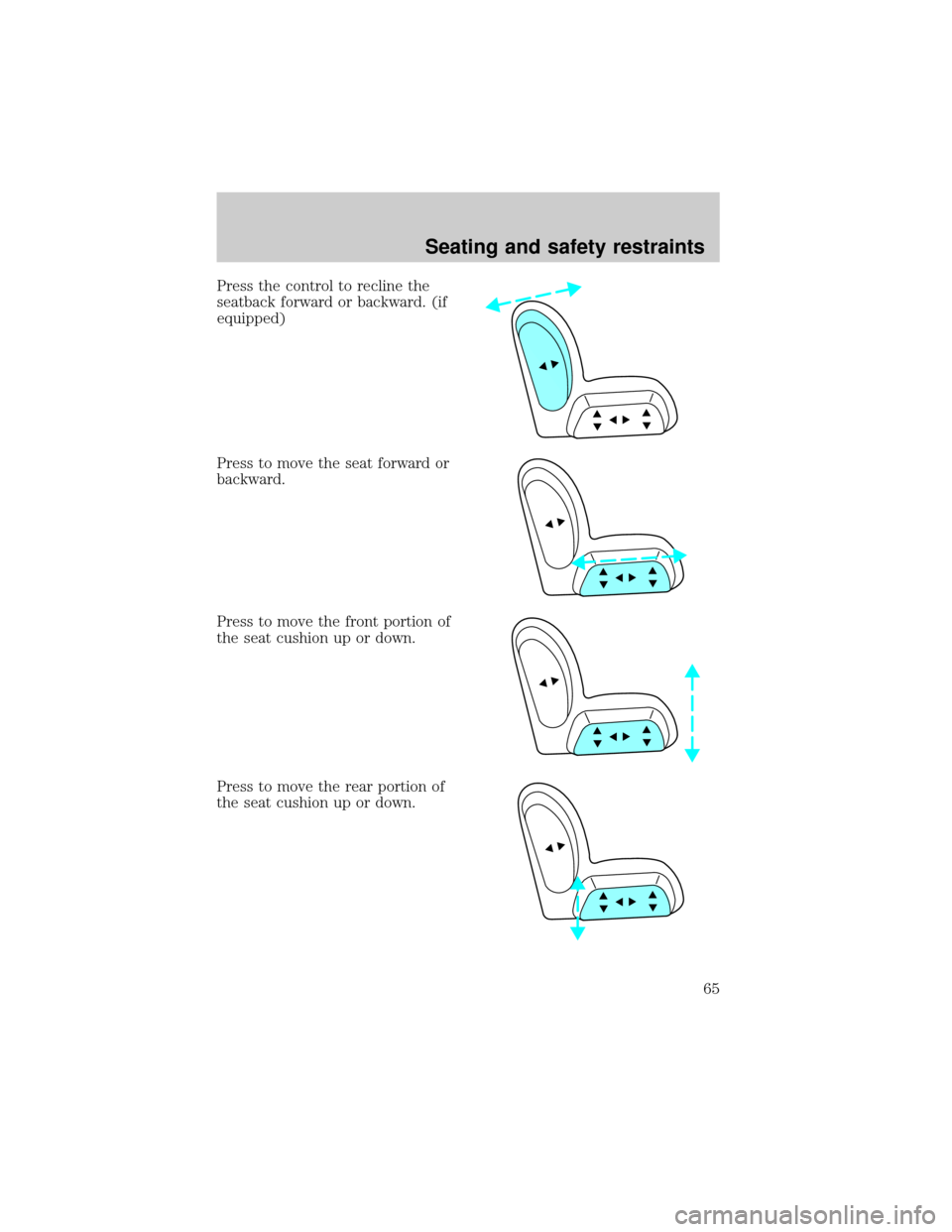
Press the control to recline the
seatback forward or backward. (if
equipped)
Press to move the seat forward or
backward.
Press to move the front portion of
the seat cushion up or down.
Press to move the rear portion of
the seat cushion up or down.
Seating and safety restraints
65
Page 65 of 188
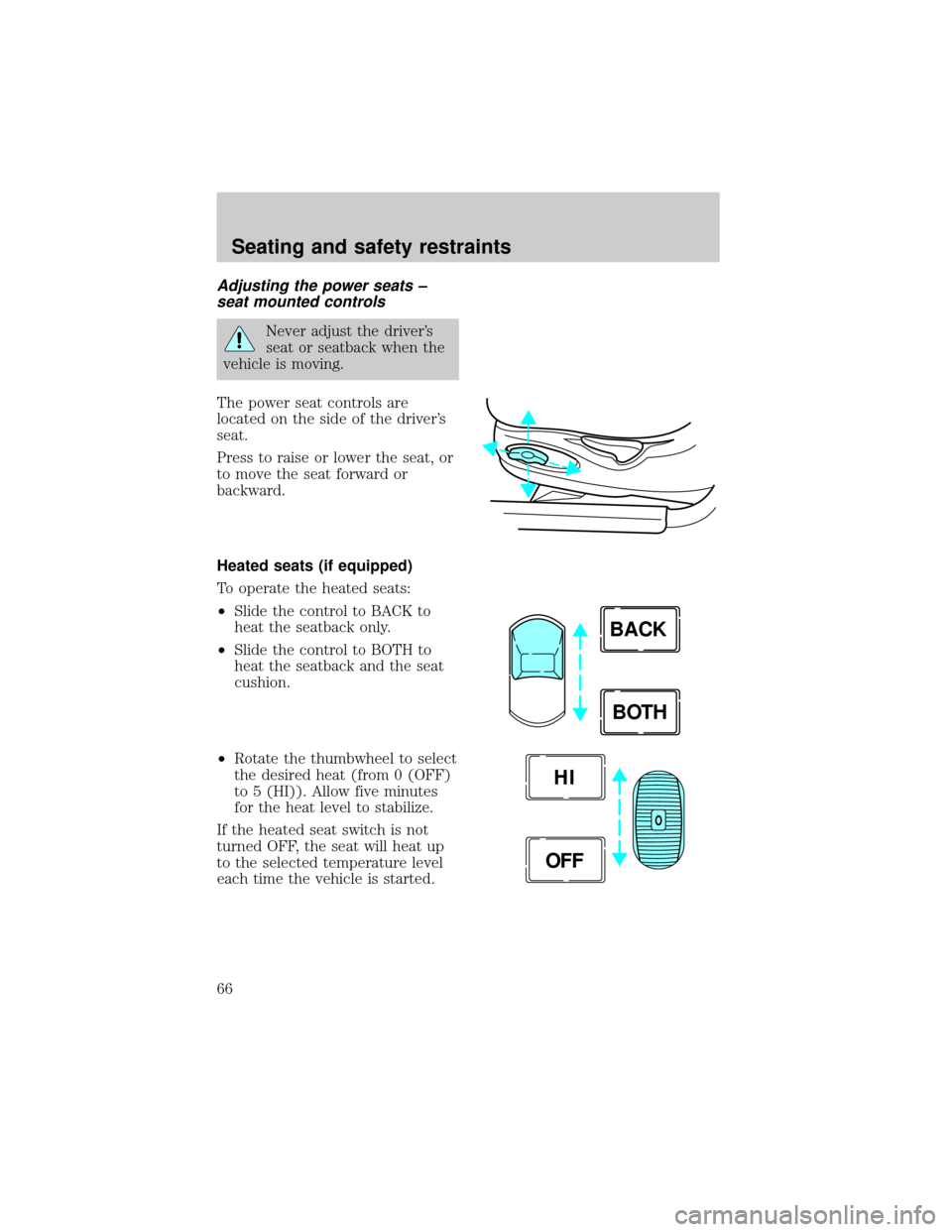
Adjusting the power seats ±
seat mounted controls
Never adjust the driver's
seat or seatback when the
vehicle is moving.
The power seat controls are
located on the side of the driver's
seat.
Press to raise or lower the seat, or
to move the seat forward or
backward.
Heated seats (if equipped)
To operate the heated seats:
²Slide the control to BACK to
heat the seatback only.
²Slide the control to BOTH to
heat the seatback and the seat
cushion.
²Rotate the thumbwheel to select
the desired heat (from 0 (OFF)
to 5 (HI)). Allow five minutes
for the heat level to stabilize.
If the heated seat switch is not
turned OFF, the seat will heat up
to the selected temperature level
each time the vehicle is started.
BACK
BOTH
O
HI
OFF
Seating and safety restraints
66
Page 66 of 188
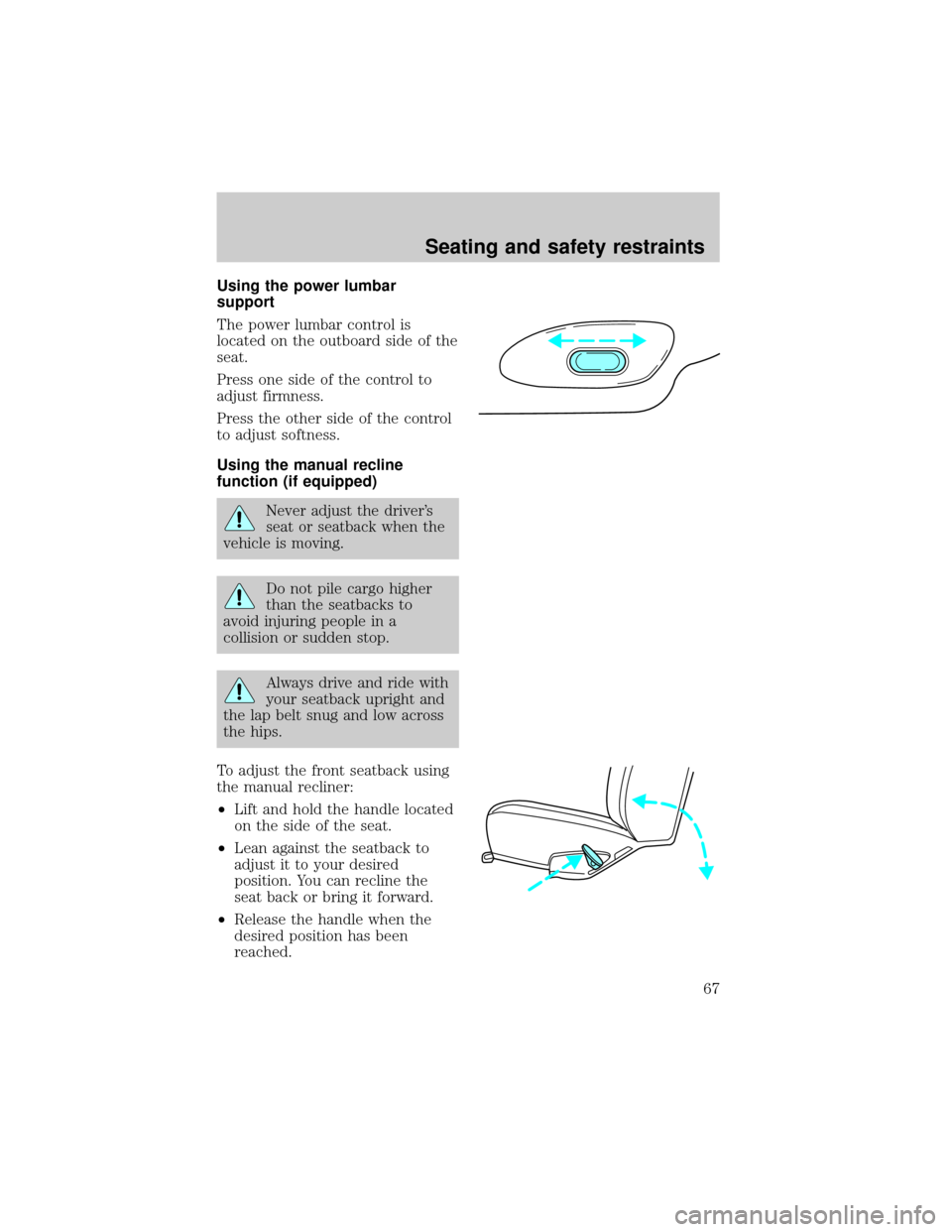
Using the power lumbar
support
The power lumbar control is
located on the outboard side of the
seat.
Press one side of the control to
adjust firmness.
Press the other side of the control
to adjust softness.
Using the manual recline
function (if equipped)
Never adjust the driver's
seat or seatback when the
vehicle is moving.
Do not pile cargo higher
than the seatbacks to
avoid injuring people in a
collision or sudden stop.
Always drive and ride with
your seatback upright and
the lap belt snug and low across
the hips.
To adjust the front seatback using
the manual recliner:
²Lift and hold the handle located
on the side of the seat.
²Lean against the seatback to
adjust it to your desired
position. You can recline the
seat back or bring it forward.
²Release the handle when the
desired position has been
reached.
Seating and safety restraints
67
Page 67 of 188
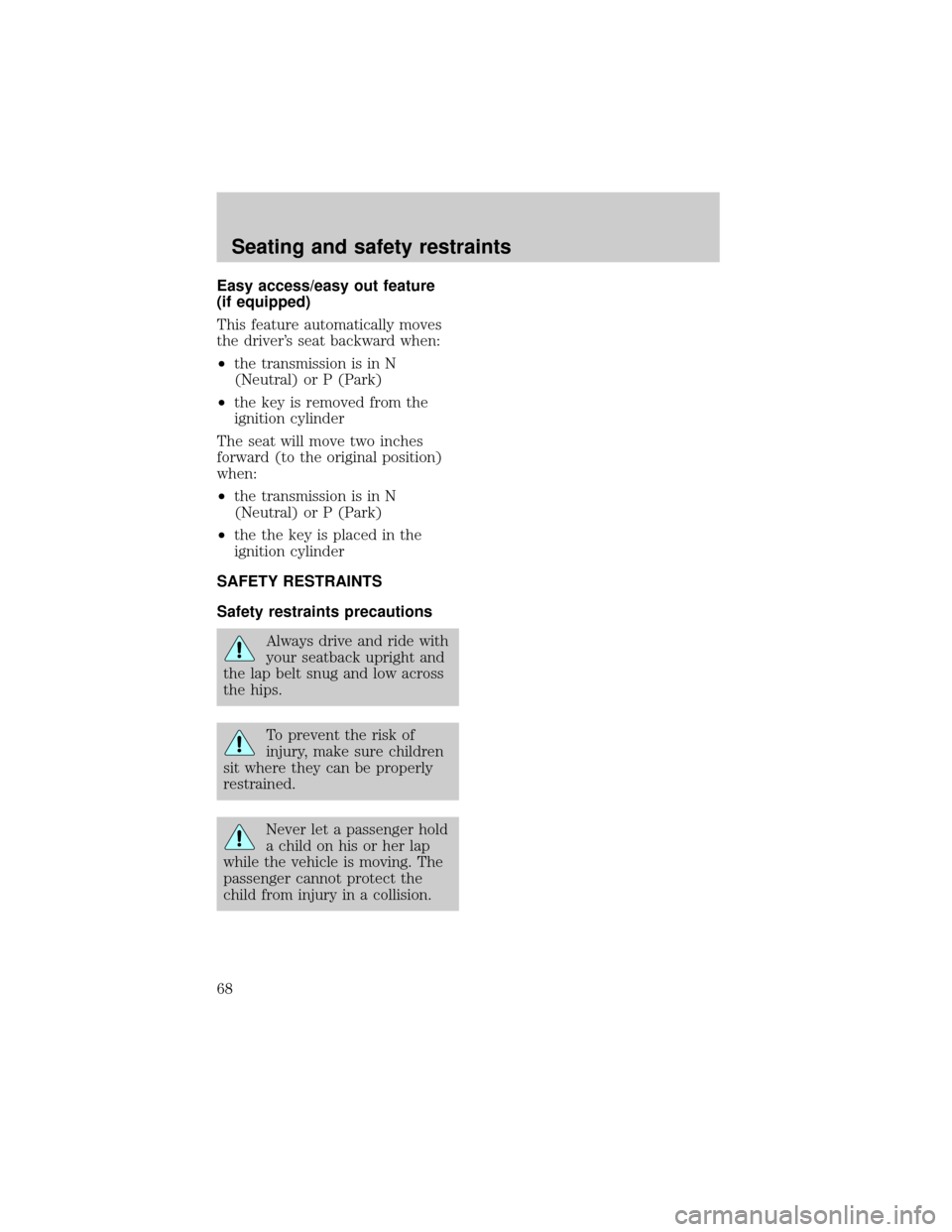
Easy access/easy out feature
(if equipped)
This feature automatically moves
the driver's seat backward when:
²the transmission is in N
(Neutral) or P (Park)
²the key is removed from the
ignition cylinder
The seat will move two inches
forward (to the original position)
when:
²the transmission is in N
(Neutral) or P (Park)
²the the key is placed in the
ignition cylinder
SAFETY RESTRAINTS
Safety restraints precautions
Always drive and ride with
your seatback upright and
the lap belt snug and low across
the hips.
To prevent the risk of
injury, make sure children
sit where they can be properly
restrained.
Never let a passenger hold
a child on his or her lap
while the vehicle is moving. The
passenger cannot protect the
child from injury in a collision.
Seating and safety restraints
68
Page 68 of 188
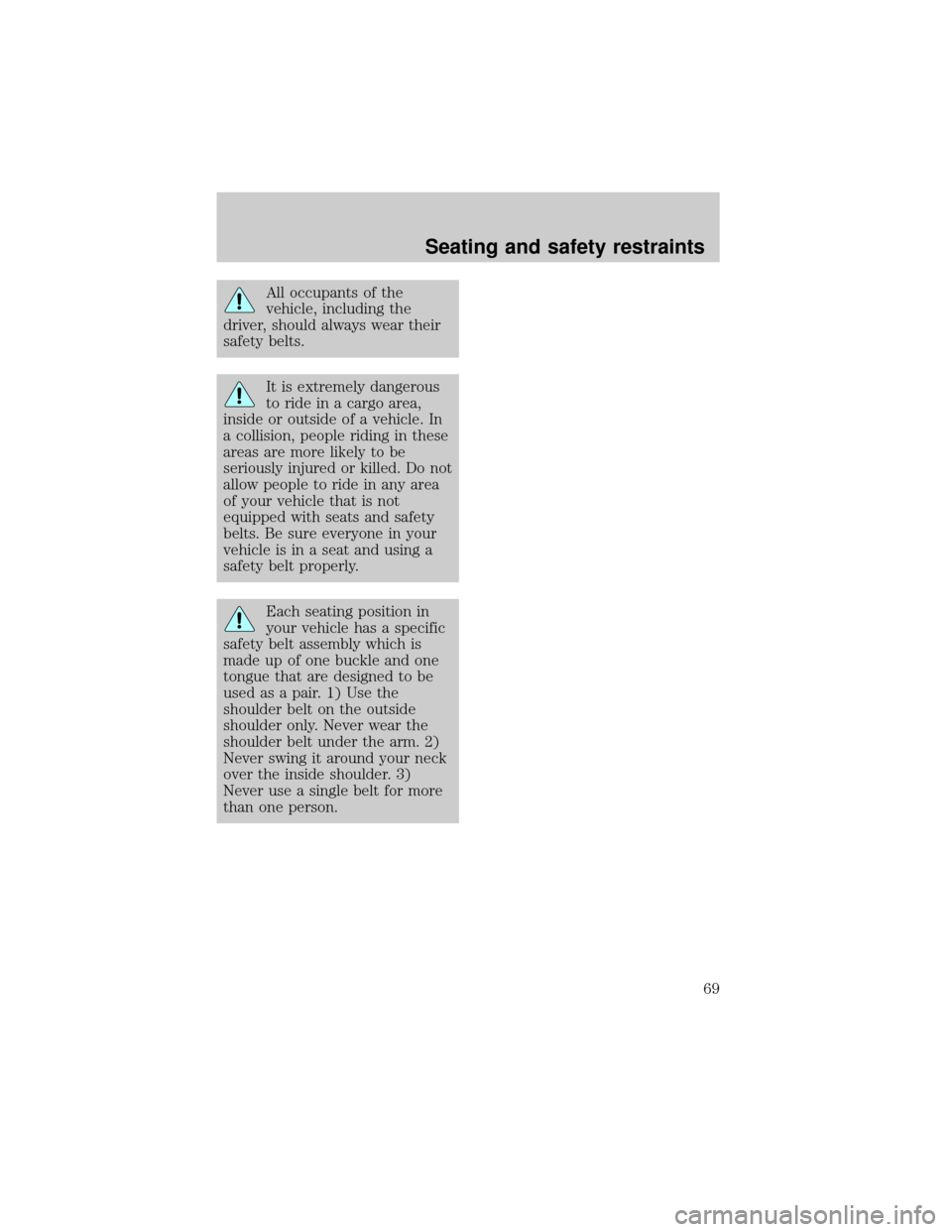
All occupants of the
vehicle, including the
driver, should always wear their
safety belts.
It is extremely dangerous
to ride in a cargo area,
inside or outside of a vehicle. In
a collision, people riding in these
areas are more likely to be
seriously injured or killed. Do not
allow people to ride in any area
of your vehicle that is not
equipped with seats and safety
belts. Be sure everyone in your
vehicle is in a seat and using a
safety belt properly.
Each seating position in
your vehicle has a specific
safety belt assembly which is
made up of one buckle and one
tongue that are designed to be
used as a pair. 1) Use the
shoulder belt on the outside
shoulder only. Never wear the
shoulder belt under the arm. 2)
Never swing it around your neck
over the inside shoulder. 3)
Never use a single belt for more
than one person.
Seating and safety restraints
69
Page 69 of 188
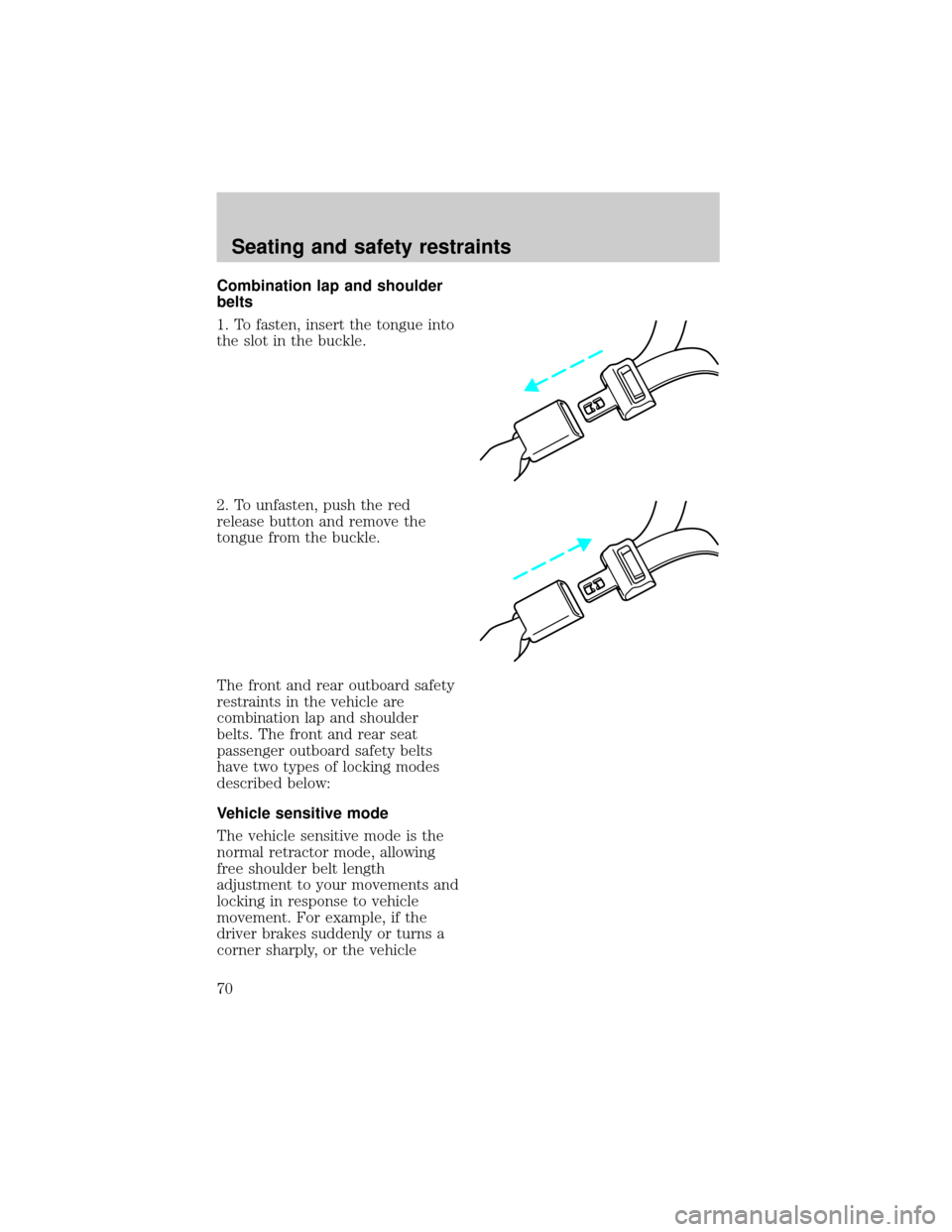
Combination lap and shoulder
belts
1. To fasten, insert the tongue into
the slot in the buckle.
2. To unfasten, push the red
release button and remove the
tongue from the buckle.
The front and rear outboard safety
restraints in the vehicle are
combination lap and shoulder
belts. The front and rear seat
passenger outboard safety belts
have two types of locking modes
described below:
Vehicle sensitive mode
The vehicle sensitive mode is the
normal retractor mode, allowing
free shoulder belt length
adjustment to your movements and
locking in response to vehicle
movement. For example, if the
driver brakes suddenly or turns a
corner sharply, or the vehicle
Seating and safety restraints
70
Page 70 of 188
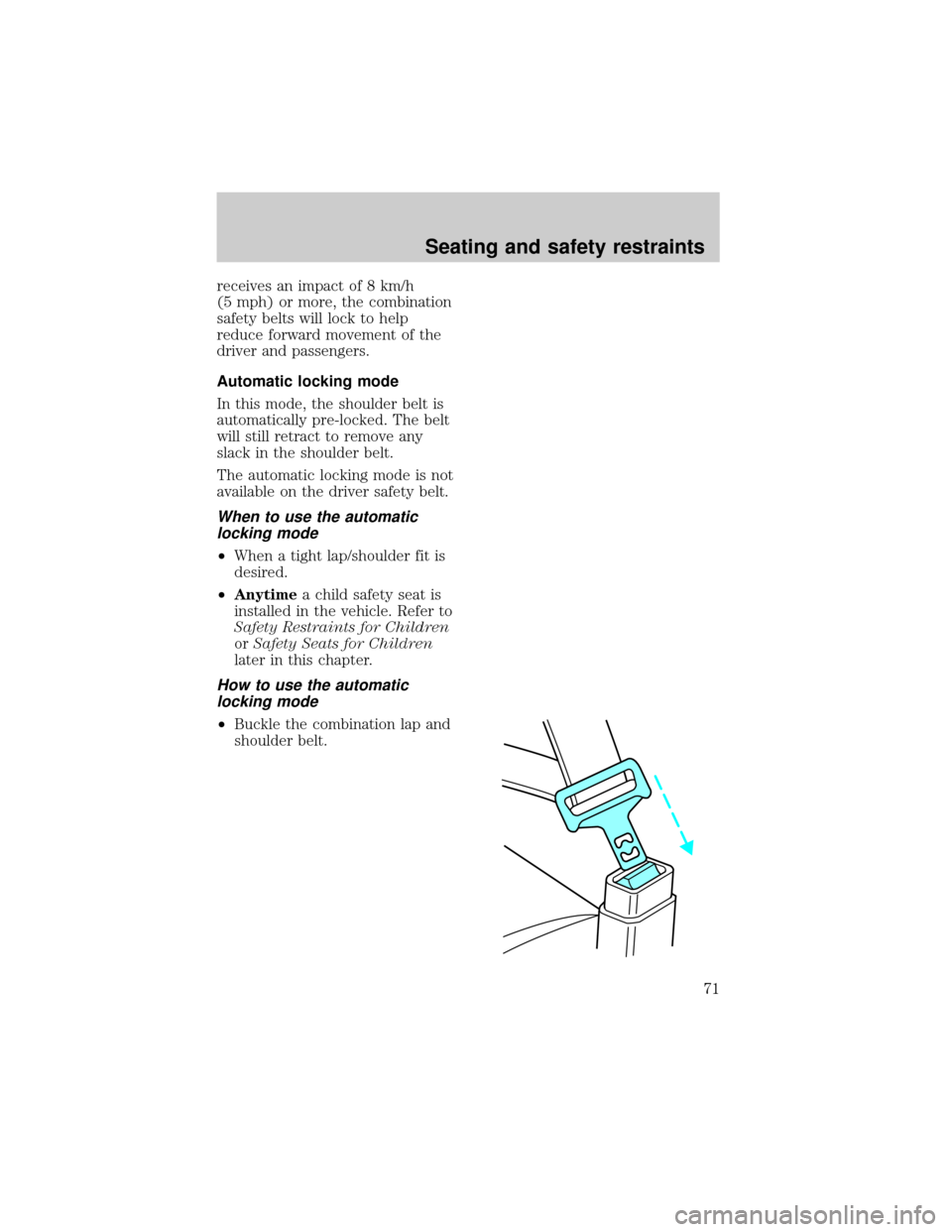
receives an impact of 8 km/h
(5 mph) or more, the combination
safety belts will lock to help
reduce forward movement of the
driver and passengers.
Automatic locking mode
In this mode, the shoulder belt is
automatically pre-locked. The belt
will still retract to remove any
slack in the shoulder belt.
The automatic locking mode is not
available on the driver safety belt.
When to use the automatic
locking mode
²When a tight lap/shoulder fit is
desired.
²Anytimea child safety seat is
installed in the vehicle. Refer to
Safety Restraints for Children
orSafety Seats for Children
later in this chapter.
How to use the automatic
locking mode
²Buckle the combination lap and
shoulder belt.
Seating and safety restraints
71